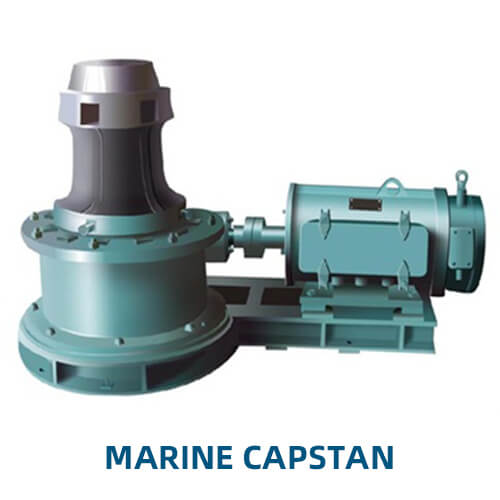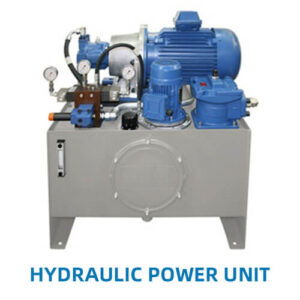Key Features of a Marine Capstan:
- Vertical Drum:
- The central component of the capstan is a vertical drum or barrel around which ropes, cables, or chains are wound. The drum rotates, pulling in or letting out the line as needed.
- Motorized Operation:
- Electric Motor: Commonly used for smaller capstans, powered by the vessel’s electrical system. It provides smooth and controlled operation.
- Hydraulic Motor: Used for larger capstans that require more power, especially on bigger vessels. Hydraulic capstans are known for their strength and durability, capable of handling significant loads.
- Manual Operation:
- Some capstans, particularly on smaller boats or in less demanding applications, may be operated manually with the help of a lever or handle. This traditional method is simple but requires physical effort.
- Controls:
- Capstans are operated via foot pedals, levers, or remote controls, allowing the operator to engage or disengage the capstan, control its speed, and change the direction of rotation.
- Brake System:
- A braking mechanism is used to hold the drum in place when the capstan is not in operation. This is crucial for maintaining tension in the line and preventing uncontrolled movement.
- Base and Mounting:
- The capstan is mounted on a sturdy base, often integrated into the ship’s deck or dock structure. The base must be strong enough to handle the loads imposed during operation.
Applications of Marine Capstans:
- Mooring:
- Capstans are widely used for mooring operations, where they help secure the vessel to a dock by pulling in mooring lines and adjusting their tension. This ensures that the ship remains safely docked, even in changing tides and currents.
- Anchoring:
- Capstans can assist in anchoring operations, particularly on smaller vessels. They help manage the anchor chain or rope, making it easier to lower or raise the anchor.
- Towing:
- Capstans are also used in towing operations, where they help manage the tension in towlines, ensuring that the towing process is smooth and controlled.
- Line Handling:
- On large vessels, capstans are used to handle various lines during docking, undocking, and other maneuvering operations. They provide the necessary power to control heavy lines efficiently.
- Cargo Handling:
- In some cases, capstans are used for lifting or moving cargo on ships, particularly when other lifting equipment is not available or practical.
Advantages of Marine Capstans:
- Ease of Use: Capstans allow for controlled handling of lines with minimal manual effort, reducing the physical strain on the crew.
- Safety: By providing precise control over heavy lines and loads, capstans help prevent accidents and ensure safe operations, especially in challenging conditions.
- Versatility: Capstans are versatile machines that can be used for various tasks, including mooring, anchoring, and towing, making them a valuable tool on any vessel.
- Compact Design: The vertical design of the capstan allows it to be installed in tight spaces on the deck, making it suitable for a wide range of vessels.
Types of Marine Capstans:
- Electric Capstans:
- These are powered by the ship’s electrical system and are commonly used on smaller vessels. They are easy to operate and maintain, making them a popular choice for light to medium-duty applications.
- Hydraulic Capstans:
- Hydraulic capstans are used on larger vessels where more power is required. They are capable of handling heavy loads and are preferred for demanding applications like towing and large mooring operations.
- Manual Capstans:
- Manual capstans are operated by hand and are typically used on small boats or in situations where power is not available. They are simple and reliable, though they require physical effort to operate.
Considerations for Choosing a Marine Capstan:
- Load Capacity: The capstan must be capable of handling the maximum load expected during operations. This includes the weight of the lines, anchors, or cargo, as well as any additional forces from wind, waves, or current.
- Power Source: Depending on the vessel’s configuration, choose between electric, hydraulic, or manual capstans. Consider the power availability and the operational demands of the vessel.
- Durability: The capstan should be built to withstand the harsh marine environment, including exposure to saltwater, extreme temperatures, and mechanical wear.
- Control System: Ensure that the capstan’s control system is user-friendly and provides precise control over the speed and direction of the drum.
- Maintenance: Regular maintenance is essential to keep the capstan in good working condition. Consider the ease of maintenance and the availability of spare parts when selecting a capstan.
Marine capstans are essential tools for managing heavy lines and loads on vessels, contributing to the safety and efficiency of maritime operations. Whether used for mooring, anchoring, or towing, a well-chosen capstan can greatly enhance the capabilities of a ship or boat.






